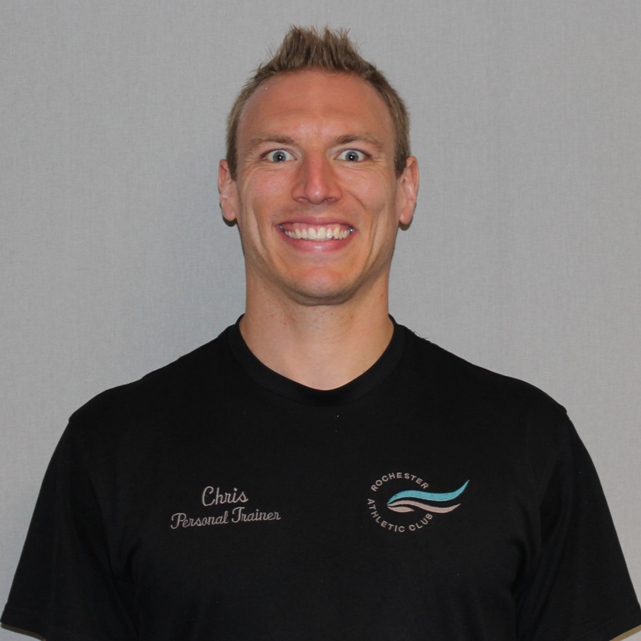Exercise: How Much Is Too Much?
Posted by Chris Zink on March 27, 2019
“More is better” is a common approach for people in many different aspects of their lives. A “more is better” mind set or approach to one’s own fitness is not necessarily a bad thing, however it can lead to potential setbacks and negatively affect performance outcomes if not kept in balance. Each athlete requires different stimuli to maximize growth in areas like speed, quickness, strength, or agility. Likewise, each athlete also requires different levels of rest and recovery.
Stressing the body is what makes it adapt and change. In order for strength or muscle size to increase one must push the body past what it is normally accustomed to. This is why training hard and frequently offers great results. However, the recovery and healing process of the body after intense workouts is what allows the body to heal, rebuild, and be prepared for the next workout session.
What happens after a challenging workout? The body must have ample time to reset after intense lifting and cardio based sessions. The muscle needs to rebuild after being broken down and the nervous system needs to have time to relax and recover after being highly stressed.
If time for recovery is not provided, the body will continue to try to keep up with the increased demands in any way possible. This is where issues may start to appear. Workouts that were once easy might seem hard. Routines of a fast paced nature might feel sluggish and more challenging. Aches and pains might start to appear that have never been an issue before.
Training hard and training frequently is great, but adequate rest for the body can be just as important as one might think adding another workout would be. Continual pushing of the body’s energy systems is vital to performance growth. However, feeling high levels of fatigue and continuing to push the body can lead to overuse injuries and burnout.
When thinking about how much exercise is too much exercise, I find myself looking back at how I used to train and now see what might be a perfect example of what too much exercise looks like.
When I was starting to dive into training for my first marathon I didn’t miss one run or one lifting session. I was going all out, all the time, with the intensity and frequency of my workouts. However, I began to find over the years of running that my body was hitting plateaus at the same time during my training periods for different events. Looking back, I was sick three weeks out of both marathons and also during the highest mileage training before my half marathons.
I thought that for the best results I must complete every run and lifting session in my program no matter how I felt. This is where mistakes can be made that can lead to overuse injuries or overly taxed immune systems. Taking some of the runs off to allow my body time to regain its strength would have been more beneficial to my training than pushing myself so close to exhaustion.
Whether you are preparing for a marathon, iron man, power lifting meet, or general exercise - rest and recovery is a key to your overall health and performance. A healthy mind set and approach to your fitness or exercise program will give you the foundation to make a healthy progression mentally, physically, and emotionally.
Here are some ideas on what you can do to maintain a healthy approach toward your workouts:
Never hesitate after a long week of work to give yourself a day of mental and physical rest. You could also do an active recovery day. Below are listed some great ways to actively recover and allow your body and mind the time to rejuvenate and heal.
- Complete a light easy jog for one mile, walk the next mile, and call it good.
- Complete an easy 1000 meter row, stretch, and hit the showers.
- Lift weights but do short easy sets and reps.
- Sit in the hot tub or sauna.
- Complete a dynamic warm up and sit in the steam room.
The mental aspect of fatigue and mental burnout might actually be more of a factor for some than physical fatigue. If your motivation is typically high and is gradually lowering over time, never hesitate to take three or four days off to allow your brain to relax and reset. Do other activities that allow you to stay active but recover simultaneously like:
- Walking the dog
- Swimming
- Regular or Frisbee golfing (if anyone still plays that)
- Light running
- Bike riding
- Rollerblading
For physical fatigue taking a few days, a week, or even two weeks off can offer a significant positive impact on the body’s healing and recovery processes. Giving the body rest will not result in loss of muscle. Strength will be slightly impacted, but will turn around very quickly when you return to regular activity.
Your emotional state can also directly impact physical performance both negatively and positively. Emotionally taxing events in life can reduce motivation and therefore lower physical performance and the desire to workout. To combat emotional challenges, keep things light and set realistic, achievable goals. Accomplishments and small victories can go a long way towards maintaining motivation. They can feed the drive to work out and as a result help you to progress.
If consistent fatigue is present, taking the right steps will have a positive impact on your training. Your program will continue when you start back up and your body will have had the recovery needed to be pushed and perform well. Taking care of yourself mentally and emotionally is as important to physical performance outcomes as is taking care of your body physically. And remember - just doing “more” is not always better.

Chris Zink
Chris is originally from Austin, and now lives in Rochester. Throughout high school and college he participated in football and tennis. In his spare time he enjoys woodworking and any type of building/construction projects. Time spent outside doing fun activities with his wife and two boys is the highlight of his day!
Contact Chris Zink



